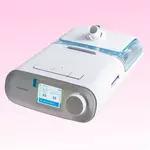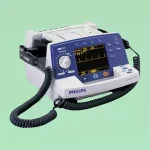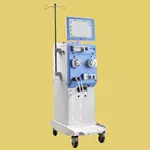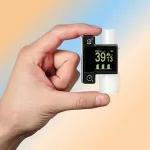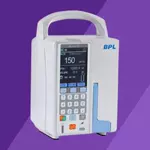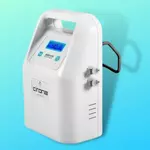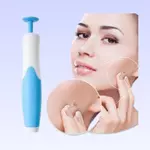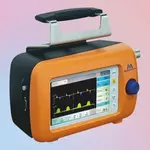Blog
Central Sleep Apnea: Causes, Types, Symptoms, Diagnosis, and Treatment
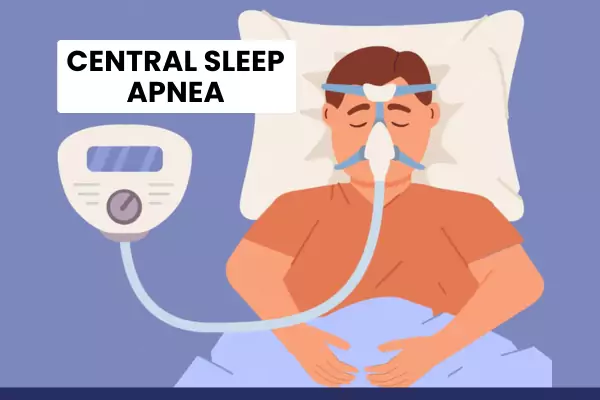
Overview:
Central sleep apnea (CSA) is a sleep disorder characterized by repeated pauses in breathing during sleep, caused not by a physical blockage of the airway but by a failure of the brain to send appropriate signals to the breathing muscles. This leads to disrupted breathing patterns and poor sleep quality.
Types of Central Sleep Apnea
Central sleep apnea (CSA) can be classified into several types based on underlying causes and pathophysiology. The main types include:
Primary Central Sleep Apnea (Idiopathic CSA): It occurs without an identifiable underlying medical condition. It is characterized by the brain’s failure to send consistent breathing signals during sleep.
Cheyne-Stokes Breathing (CSB) Central Sleep Apnea: Commonly seen in patients with heart failure or stroke. It is characterized by a cyclic waxing and waning pattern of breathing, alternating periods of hyperventilation and apnea.
High-Altitude Periodic Breathing: It occurs when individuals ascend to high altitudes (above approximately 2500 meters), causing altered oxygen and carbon dioxide levels and resulting in central apnea episodes.
Medical Conditions Without Cheyne-Stokes Breathing: Caused by neurological disorders (e.g., stroke, brainstem tumors), congestive heart failure without the classic Cheyne-Stokes pattern, or other systemic diseases affecting respiratory control.
CSA Due to Medications or Substances: Related to the use of opioids, sedatives, or other drugs that depress the central nervous system and impair the brain’s respiratory drive.
Treatment-Emergent CSA (Complex Sleep Apnea): Emerges after treatment initiation for obstructive sleep apnea, particularly with CPAP therapy, where central apneas develop or persist despite treatment.
Symptoms of Central Sleep Apnea
Central sleep apnea (CSA) symptoms often relate to disrupted breathing and poor sleep quality caused by the brain’s failure to send appropriate signals to the breathing muscles during sleep. Common symptoms include:
Observed pauses in breathing during sleep
Sudden awakenings with shortness of breath
Insomnia (trouble staying asleep)
Excessive daytime sleepiness (hypersomnia)
Difficulty concentrating or focusing
Mood changes and irritability
Morning headaches
Risk Factors
The risk factors for central sleep apnea (CSA) include a variety of demographic, medical, and environmental elements:
Age: CSA is more common in older adults, especially those over 60 or 65 years of age, possibly due to age-related changes in breathing control and the higher prevalence of associated medical conditions.
Sex: Males are at higher risk of developing CSA compared to females, potentially related to hormonal effects on respiratory control.
Heart Conditions: Congestive heart failure (CHF), irregular heart rhythms such as atrial fibrillation, and other cardiac diseases significantly increase CSA risk. Cheyne-Stokes respiration commonly occurs in heart failure patients and is linked with CSA.
Neurological Disorders and Brainstem Abnormalities: Stroke, brain tumors, structural brainstem changes, Parkinson’s disease, multiple system atrophy, and other neurological diseases disrupt breathing regulation, raising CSA risk.
Use of Opioids and Certain Medications: Long-acting opioids and other central nervous system depressants can impair the brain’s respiratory drive and trigger CSA.
Exposure: Sleeping at high altitudes with lower oxygen availability can induce CSA due to altered breathing control and hyperventilation cycles.
Treatment-Emergent CSA (Complex Sleep Apnea): Some individuals using continuous positive airway pressure (CPAP) for obstructive sleep apnea may develop CSA.
Other Medical Conditions: Kidney failure, hypothyroidism, metabolic disorders, and end-stage renal disease may also contribute to CSA development.
Causes of Central Sleep Apnea
CSA can arise due to a variety of underlying issues, and sometimes the exact cause is unknown. Common causes include:
Medical Conditions:
Heart disorders: Congestive heart failure, arrhythmias
Neurological disorders: Stroke, Parkinson’s disease, brain tumors
Kidney failure
Severe arthritis (indirect impact on respiratory control)
Other Triggers:
Medications: Especially opioids that suppress the brain’s respiratory signals
High Altitude: Lower oxygen levels can disrupt normal breathing patterns
CPAP Therapy: CPAP therapy used to treat OSA can sometimes induce CSA in certain individuals
Diagnosis of Central Sleep Apnea
Central sleep apnea (CSA) is diagnosed through a combination of symptom assessment, medical history review, and sleep studies, particularly polysomnography. A sleep study helps identify the characteristic pauses in breathing and associated physiological changes during sleep, distinguishing CSA from other sleep-related breathing disorders like obstructive sleep apnea.
Symptom and Medical History
Patient Interview: Doctors inquire about symptoms like excessive daytime sleepiness, insomnia, morning headaches, and pauses in breathing noticed by bed partners or family members. Medical history review focuses on conditions such as heart failure and medications that might contribute to CSA.
Sleep Studies – Polysomnography (PSG): During a PSG, a person sleeps in a sleep lab while various physiological parameters are monitored:
EEG: Measures brain waves to assess sleep stages
EOG: Records eye movements to help identify REM sleep
EMG: Tracks muscle activity to assess tone and movements
ECG: Monitors heart rate and rhythm
Breathing Pattern Monitoring: Detects apneas and hypopneas
Pulse Oximetry: Measures blood oxygen saturation
Airflow Sensors: Measure air movement through nose and mouth
Home Sleep Tests (HST): Less comprehensive than PSG and often insufficient for diagnosing CSA, particularly if diagnosis is uncertain or other conditions are suspected.
Alternate Treatments for Central Sleep Apnea
Alternative treatments extend beyond standard CPAP therapy and include:
Adaptive Servo-Ventilation (ASV): Automatically adjusts pressure to smooth breathing patterns; not for certain heart failure patients.
Bilevel Positive Airway Pressure (BiPAP): Provides different pressures for inhalation and exhalation.
Supplemental Oxygen: Used during sleep to maintain adequate oxygen saturation.
Medications: Carbonic anhydrase inhibitors like acetazolamide may stabilize breathing by raising CO₂.
Nasal Expiratory Positive Airway Pressure: Increases pressure during exhalation to stabilize airway and CO₂ levels.
Oral Appliances: Sometimes used alongside other therapies for complex cases.
Oral (Negative) Pressure Therapy: Applies negative pressure via a mouthpiece to reduce airway collapse.
Positional Therapy: Avoiding supine posture can reduce severity in some cases.
Body Position and Fluid Management: Wedge pillows or positional aids may help.
Phrenic Nerve Stimulation: An implantable device that stimulates the diaphragm via the phrenic nerve for patients intolerant of PAP.
Sedatives: In selected cases to promote more stable sleep phases; must be used carefully.
Living with Central Sleep Apnea
CSA is a neurological issue affecting the control of breathing patterns. Living with CSA requires understanding the condition, following medical guidance, and making lifestyle adjustments:
Understanding the Condition: Recognize symptoms and obtain a sleep study for diagnosis.
Prescribed Treatment: ASV, CPAP, supplemental oxygen, or medications depending on cause; address underlying conditions.
Manage Underlying Health Issues: Heart disease, stroke, or medication factors should be treated.
Adopting Healthy Sleep Practices: Consistent schedule, comfortable environment, avoid alcohol or sedatives.
Monitoring and Regular Check-Ups: Follow-ups with a sleep specialist to adjust treatment.
Emotional and Mental Health Support: Family support, counseling, or groups may help.
Physical Activity: Regular moderate exercise supports overall health and sleep quality.
FAQs About CSA
How does Central Sleep Apnea differ from Obstructive Sleep Apnea?
CSA: Breathing stops because the brain doesn’t send proper signals to respiratory muscles.
OSA: Breathing stops due to airway blockage. Mixed sleep apnea includes both.Can CSA be diagnosed with a home sleep test?
No. HSTs are not accurate for CSA; an in-lab sleep study is required.Can lifestyle changes help CSA?
Yes—avoid alcohol and sedatives, maintain a healthy weight, manage heart/neurological conditions, keep a consistent sleep schedule.Can central sleep apnea occur with obstructive sleep apnea?
Yes—this is called complex sleep apnea syndrome.Who is most at risk for CSA?
People with heart conditions, neurological disorders, or opioid use are at higher risk.

